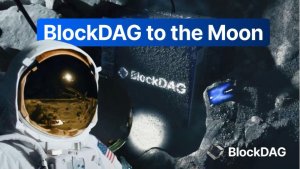Why do brokers prefer MetaTrader 5 gateways over bridges?
Liquidity bridges have come a long way since their introduction, but was it the right way? Brokeree Solutions shares an overview of gateway technology.

Starting as a simple connector between MetaTrader 4 servers and liquidity providers, bridges have evolved into sophisticated multi-component systems that are a few features away from becoming an actual trading platform. Even though the financial technology market offers brokers a wide range of bridge solutions today, brokers still prefer MetaTrader 5 gateways to connect to a liquidity provider. Manageable, simple, reliable, that is how gateways are traditionally perceived by users. In fact, these tools have several hidden advantages and may compete confidently with bridges in the area of market connectivity.
From a technical point of view, gateways are plugin-like programs that are installed on a MetaTrader server. This implementation in the platform’s back-end defines the two-part mechanism of a solution. After a trade is created, it comes through a routing rule and goes straight to a gateway. The gateway itself does not process the data, but only directs the trade to the LP and passes a response from the counterparty back to the platform. Thus, a gateway creates a simple and reliable communication chain that involves two elements: MetaTrader 5 and a liquidity provider. This operational transparency of technology not only limits technical risks but also helps engineers easily trace errors back to the root of a problem in case of an emergency.
The symbol configuration process for gateways is also very transparent and is carried out through the MetaTrader interface. A broker needs to map symbols from a liquidity provider to a list of instruments on a trading platform. Liquidity aggregation, on the other hand, is done by MetaTrader 5 itself. For instance, several quote sources can be connected to ECN symbols so that the platform can execute trades at the best price from the depth of the market. Another way to use ECN symbols is to use one gateway as a feed to display real-time quotes and another LP for trade execution.
A true highlight of MT5 gateways is the ability to place pending orders directly on the market. It is especially crucial when trading stocks as definite real-time quotes for the stock market occur to be quite expensive. Therefore, most brokers prefer to stream indicative prices from market data providers and interact with the LP-only for trade execution. In this case, quotes on the platform differ from the market prices. By the time the requested price matches the quote on the trading platform, there may not be any liquidity for that order on the market, resulting in delays in trade execution. Since most bridges only process trade requests, they basically don’t react to a pending order until it is executed on the trading platform.
There is also a difference between gateways and bridges performance during emergencies. A complex infrastructure of bridge systems has in-build risk management tools, but they may not guarantee a prompt response to infrastructure breakdowns and may require manual reconfiguration. On the contrary, as a component of MetaTrader 5, the gateway follows the internal risk mitigation scenarios of the platform, which can handle even crucial errors such as a crash of a live trading server. MetaTrader 5 switches the live server to a backup instance and updates all corresponding IPs for the history server, which operates gateways. In this case, a broker does not need to worry about quote freezes or missing trade requests; instead, they can focus on fixing the root issue. Similarly, the MetaTrader cluster connects existing gateways with new live trading servers, and there is no need to implement an additional gateway or reconfigure the old one.
There are three most common scenarios when brokers may need a more comprehensive solution than a gateway:
- A company works with different trading platforms, e.g., MT4 and MT5;
- There is a request to process some risks in-house and hedge trades partially to a counterparty;
- A broker wants to receive advanced exposure and execution analytics.
In all cases, a two-part liquidity chain may be replaced by a three-part model “trading platform-bridge-liquidity provider”, where the bridge operates as a mediator that can connect several platforms, perform hybrid execution, and generate detailed reports.
Both gateways and bridges undoubtedly address the main needs of brokers — connect a platform with the liquidity provider. Besides this essential request, a broker always has additional requirements mainly based on the business model. Does a broker work with several liquidity providers? How many MetaTrader servers do they have? Do they process trades on a-book, b-book, or via hybrid execution? Do they offer stock trading to clients? Is there a need for detailed trade analytics? All these conditions precede the question posed in the title of this article — “why do some brokers prefer gateways to bridges?”
In conclusion, the technology always follows the business model, and its main goal is to fulfil the broker’s idea and make routine processes more comfortable. On the other hand, even the most excellent idea can’t be sufficiently executed without high-quality software. Therefore, it is so important to find a reliable technology provider who can accurately suggest the solution that can turn the idea into reality.









